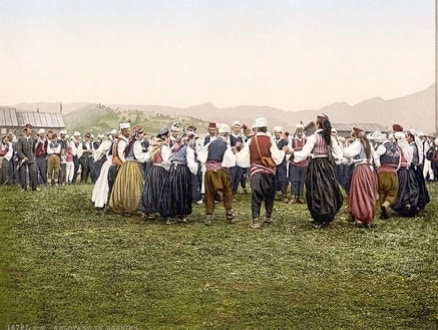HUNGARIAN FOLK MUSIC VS. HUNGARIAN GYPSY MUSIC
True folk music of the peasants in Hungary was a type of music that very few middle- and middle-upper class people knew anything about: what most people believed to be folk music was in fact Gypsy music. Here are three examples of “true” Hungarian folk music, followed by two examples of “Gypsy” music, which is a very different type of music! Enjoy!










BARTÓK’S HUNGARIAN CONTEMPORARIES
ZOLTÁN KODÁLY
Kodály (1882-1967) was one of Bartók’s closest friends and folk-music collaborators. Both men travelled extensively to collect and record folk music, often travelling together. Kodály, like Bartók, based much of his output as a composer on folk music, and his many popular works, such as Háry János (1926) and Dances of Galánta (1933) are widely performed and admired around the world. Bartók and Kodály are the two champions of 20 th Century Hungarian folk music.


ERNŐ DOHNÁNYI
Dohnányi (1877-1960) was essentially contemporary with both Bartók and Kodály, but was a very different type of composer. Dohnányi was a very conservative composer whose main influences were composers such as Brahms. Although he lived until 1960, his music is firmly rooted in the 19 th century. Dohnányi was the director of the Budapest Academy and promoted the works of both Bartók and Kodály in the 1920s. Dohnányi did not pursue the systematic study of folk music that his colleagues undertook, as can be heard in this example taken from his Ruralia Hungarica , which purports to depict the rural music of Hungary. Does it sound like folk music? Brilliant orchestration!


GYÖRGY LIGETI
Although György Ligeti (1923-2006) was not a contemporary of Bartók, we include him here since he would become the most important 20 th century Hungarian composer after Bartók. His many works spanned a long and illustrious career and he utilized Hungarian folk music from an early age. He worked closely with Stockhausen and the Darmstadt school of avante-garde composers. His music is best known to the general public through its use in Stanley Kubrick’s film 2001 . A brilliant example of his writing is offered here with his Wind Quintet: have a listen!


LIGETI’S GRAVE IN VIENNA,
PHOTO BY LEO TAKEN IN JANUARY 2014
